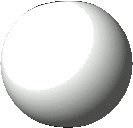![]()
![]()
![]()
![]()
![]()
![]()
![]()
![]()
![]()
![]()
![]()
![]()
![]()
![]()
jarewēλecāwāŋŋe
This is not a real word. (What? you ask. Does it matter? The language isn’t “real” either. What does it mean to have a made-up word in a made-up language?)
See, the people on the CONLANG list were discussing language completion (whatever that means!) and someone suggested that translations of certain texts were more likely in a more “complete” conlang. (As always, Dirk Elzinga had a good response.) The UN Declaration on Human Rights was suggested. Been there, done that. Then, Alice’s Adventures in Wonderland. Um, too long. And then The Jabberwocky. Oh. I could do that!
Of course, the challenge of The Jabberwocky is to come up with words that a hypothetical native speaker of the language would come up with – words that are nonsensical yet evocative of other words.
So, line 1 of the Kēlen Jabberwocky:
il ōrralon ñi jarewēλecāwāŋŋi ā jawēlrūlri rū jaxēwepōma āñ;
il ōrralon is “in the afternoon”. And then we have ñi jarewēλecāwāŋŋi ā jawēlrūlri rū jaxēwepōma āñ which means roughly that jawēlrūlri were making jarewēλecāwāŋŋi around the jaxēwepōma.
jarewēλecāwāŋŋi contains in it the stem –rewēλ– as in anrewēλa ‘twisty’ and the stem –cāw– as in jacāwa ‘hole’ and the stem –āŋŋ– as in jāŋŋe ‘awl’. Plus the word is plural. This evokes the idea of many twists and holes made by an awl. This is my “translation” of “gyre and gimble”.


